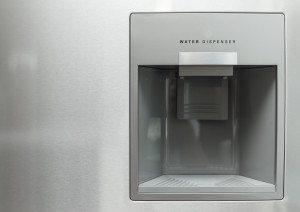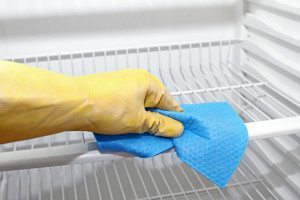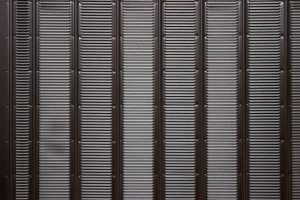Because it’s out of sight, your refrigerator’s water filter is often overlooked, forgotten about or just plain neglected. Changing the filter regularly is important, however, as buildup can result in water and ice that are not clear, refreshing or pure.
in water and ice that are not clear, refreshing or pure.
Worse, bacteria and mold can grow and make its way into your drinking water and ice cubes. This creates smelly, funny-tasting ice and water, but in some cases, it even can make you and your family sick.
Read on for all you need to know about taking care of the filter in your refrigerator.
When to Change the Water Filter
According to most manufacturers, you should change your refrigerator’s water filter once every six months. Keep in mind, however, that this is just a general guideline based on average use.
If your household goes through a lot of water and ice every day, your filter may wear out or clog in fewer than six months. Conversely, if your family does not drink a lot of water, you may be able to wait a little longer before replacement becomes necessary.
Most refrigerators feature a status light that illuminates when it’s time to replace the filter, but you may notice other signs it needs changing. If you detect any unpleasant taste or odor, or if you notice cloudy or dirty ice cubes, don’t wait for the warning light to switch out the filter.
Finding Your Water Filter
Consult your refrigerator’s manual — either the paper copy or an online version — to find out where the filtration system components are. Most filters are behind the base grille or in the front of the refrigerator compartment.
Some have knobs that lock the filter in place; others use a push button along with a cap. In some models, the filter may easily slide in and out, making replacement a breeze. Other models may have a plastic housing that must be removed to access the filtration system. These can be a challenge to work with, depending on their location.
After Changing the Water Filter
After you have located and replaced the refrigerator filter, it is important to run several gallons of water through the new filter before drinking water or using it for ice. Most filters contain activated carbon, and some residue is likely to flow out in the first gallon or two. Without flushing the carbon thoroughly, your water will have an unpleasant, bitter aftertaste.
Though some homeowners are able to change their filters, many prefer the assistance of an experienced appliance professional. Call the experts at Complete Appliance Repair, serving Kaysville, Utah, and the neighboring communities. We will service and inspect your appliance and handle changing your refrigerator’s water filter at the same time.


 more efficiently. Follow these quick and easy tips and your fridge can be frost-free and running smoothly for years to come.
more efficiently. Follow these quick and easy tips and your fridge can be frost-free and running smoothly for years to come. temperature, meaning less spoilage and waste. But maybe the best part about keeping your appliances well-maintained is that it extends their life and significantly reduces the frequency of equipment failure.
temperature, meaning less spoilage and waste. But maybe the best part about keeping your appliances well-maintained is that it extends their life and significantly reduces the frequency of equipment failure.
